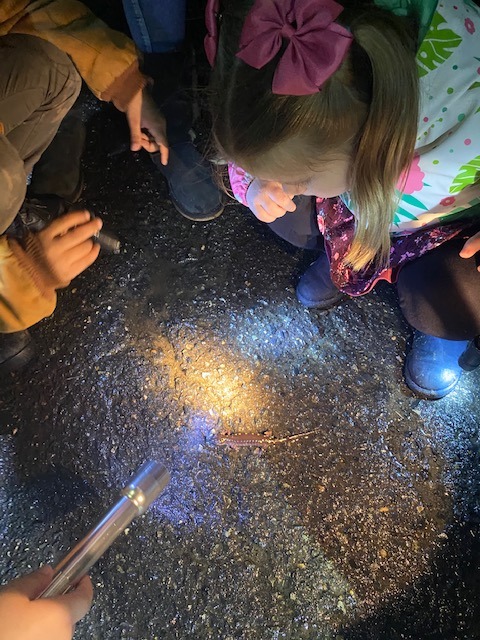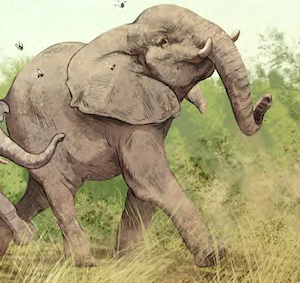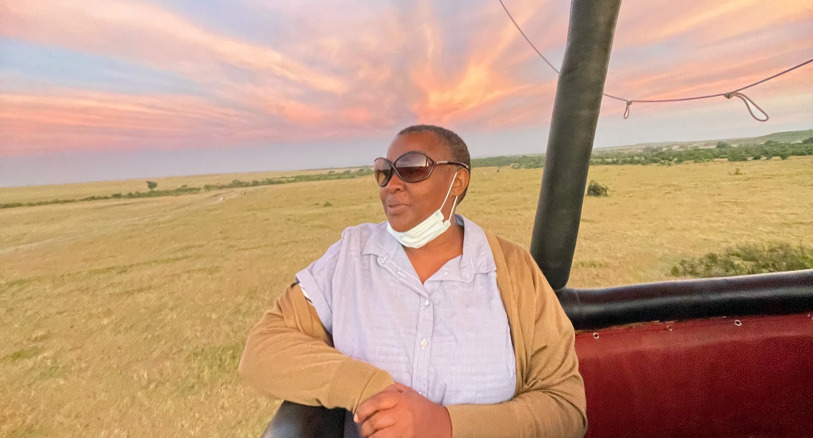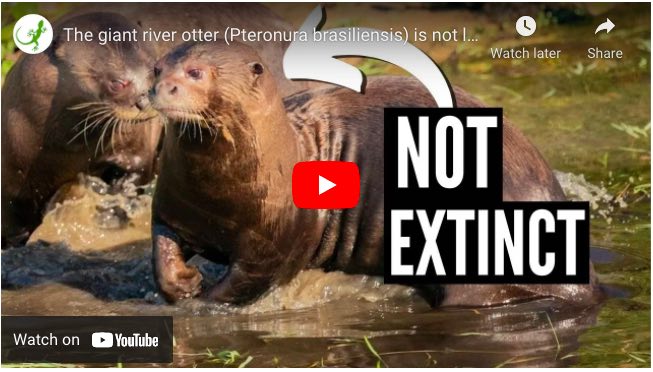It’s that time again! Spotted salamanders are on the move …

Spotted salamander. Image: Sandra Lanman
In winter they hibernate.
The spotted salamander is a beautifully patterned amphibian. It has yellow spots on a bluish-black background. Spotted salamanders live in parts of Canada and the eastern United States.
It is rare to see them. Adult spotted salamanders live in woodland leaf litter and burrows, where they feed on worms, insects, spiders, and various other invertebrates. In the winter they hibernate.
But when spring comes they migrate.
When early spring comes around, these fantastic little creatures make their way above ground and migrate to seasonal pools of water called vernal pools. (Vernal means related to spring.) The pools are where the salamanders mate and females lay their eggs.
In the pools, the eggs will hatch into larvae and grow, feeding on aquatic insects and invertebrates. Juvenile spotted salamanders leave the pools to begin a life in the forest leaf litter.
Breaking salamander news out of New Jersey!
In East Brunswick, New Jersey, the salamander migration has just got under way!
“We look at a calendar for spring. But this is biological spring. They [the spotted salamanders] know when it’s the right time to move,”
Dave Moskowitz, chairman of the East Brunswick Environmental Commission told News12 New Jersey.
Spotted salamanders like to return to the same vernal pools year after year. But in some places, humans have made their journey tricky. This is the case in East Brunswick. Beekman Road blocks the salamanders’ migration route.
Night-time crossing guards needed.
A group of salamander enthusiasts led by the Friends of the East Brunswick Environmental Commission are acting as salamander crossing guards. They are helping the salamanders make their important journey across Beekman Road.
The local police are helping too. For the last 20 years, police have closed down the road at night to help the salamanders migrate. There are even special road signs to explain why the road is closed:

Image: Dave Moskowitz
Volunteers come armed with flashlights (torches). Kids and grown-ups alike make sure the salamanders can cross safely from the woods to the vernal pools. There is lots to learn and it is an exciting event for all!

Watching a spotted salamander cross the road. Image: Sandra Lanman
Helping these spotted salamanders cross the road is important. Spotted salamander populations in New Jersey and elsewhere are risk from habitat loss. For populations to remain healthy, adult salamanders need to be able to access the pools where they breed.
Salamanders and other amphibians are indicator species. Salamanders are sensitive to changes in their environment, such as pollution. If scientists see fewer salamanders in a pool, it might indicate (suggest) a problem with water quality or some other problem that needs to be investigated.
Check out the migration yourself!
Do you live nearby? Kids and their adults are welcome to come and check out this exciting spring migration in East Brunswick. It is an amazing opportunity to connect with nature and be active in wildlife conservation. For more information, visit:
https://www.friendsebec.com/salamander-migration.html
Or, check with your local nature organization to learn more about salamanders in your area. Keep your eyes open and be careful on those roads. You never know what might be crossing!
Watch this cool video of the 2021 spotted salamander migration!
Related resources:
Friends of EBEC salamander migration information
Spotted salamander fact sheet from the CT Department of Energy & Environmental Protection
Reporting on this story from News12 New Jersey
*Mongabay Kids is not responsible for content published on external sites






